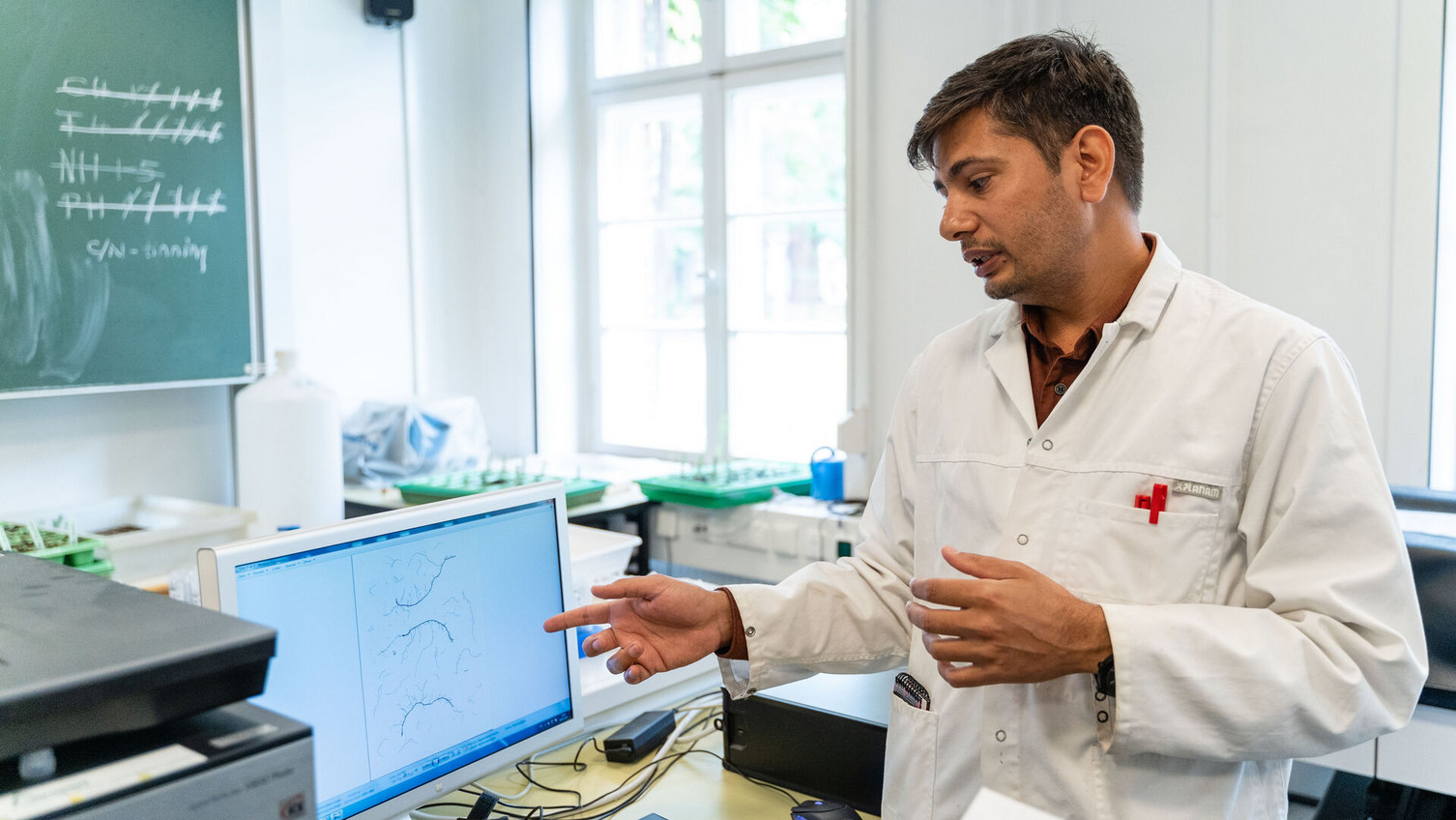Understanding the role of soil microorganisms in sustainable agriculture
2019-09-29 Intensive agriculture has led to over-utilisation of mineral fertilisers for increasing crop productivity. Subsequently, this has resulted in huge economic and environmental costs as well as biodiversity losses. Understanding and harnessing plant-microbe interactions may lead to a much more effective fertiliser use in agriculture.
According to calculations by the United Nations, almost ten billion people will live on earth in 2050. To feed the world's population, agriculture needs new objectives. Mineral fertilisers used in modern agroecosystems are neither efficient nor sustainable: "Most plants only absorb part of the fertiliser applied. The rest reaches the groundwater, soils acidify and greenhouse gases are released," explains Dr. Amit Kumar. The ecologist of Prof. Vicky Temperton's research group therefore looks at natural soil processes as part of the "INPLAMINT" research project within the BMBF Boden als Nachhaltige Resource (BoNaRes) programme. He finds them in the diversity of crops and in the soils themselves: "We want to better understand the plant-soil microorganism’s interactions in relation to fertilisation and crop improvement. Soil microorganisms have the potential to improve crop performance. We know that certain bacteria and fungi promote or inhibit the growth of plants, but we still don’t sufficiently understand why. At the moment it is often a black box into which we reach and measure something and we want to go much further than this." said Dr. Kumar.
Findings from the INPLAMINT consortium, which includes partners studying agronomy, microbiology, gaseous emissions and ecosystem services, aim to provide new agricultural concepts for reducing fertiliser input whilst still generating high agricultural yields. For example, agricultural practices have proven that growing the same crop over and over again significantly reduces the yield. The reason behind this is that certain soil pathogens accumulate if the same (host) crop is grown continuously in one location. Is such plant- soil-feedback effect (PSF) stronger when more mycorrhizal fungal species are involved? To answer this Kumar and Temperton have set up a greenhouse experiment with soils, which harbour distinct mycorrhizal fungal diversity, from the Inden mine in Nordrhein Westfalen. They investigate, whether the soil microbial legacy or the effect of the current plant affects future plant performance on the same soil to a higher degree. “We collected soils from there as they have a different microbial diversity and we want to see the effects of this microbial diversity on crop performance”, Kumar explains.
Kumar has so far found that both soil legacy and the recent crop (faba bean or oats) have strong yet distinct effects on the subsequent crop performance, and these findings along with further experiments should allow us to suggest new crop rotation management practices that will be then further tested for their respective ecosystem service provision.
Research in the field is complex, as the plant-microbial interactions under real farming conditions are often affected by the environment. Dr. Kumar, therefore, also works in a regular agricultural field where he grows different crops in monocultures and in a ‘team of two’. The selection of crops for this intercropping experiment is based on the crop’s mutualistic interactions with certain soil microorganisms. This novel idea will lead us to knowledge of the best combinations of crops in mixtures, which get the maximum benefits from mobilisation of resources through mutualism with beneficial soil microorganisms.
In addition, Kumar looks at the effects of soil nutrients on the hidden half of the plant, its roots. Longer, thinner roots are better suited for absorbing nutrients than short, thick roots. He investigates how root growth responses are affected by certain soil nutrients, which can later be selected as specific traits for genetic plant breeders to develop novel crop varieties.
This second phase of the INPLAMINT project – increasing the efficiency of agricultural nutrient use by optimising plant-soil-microbial interactions – is funded by the BMBF with approximately 317,000 euros.

